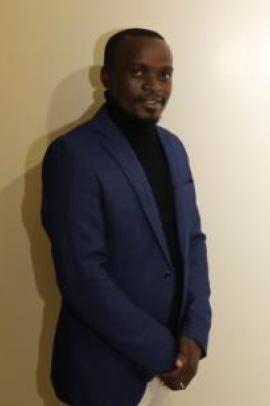
Mr. Kenneth Andibo Anakoli is a graduate of Master of Science in Nuclear Science from the Institute of nuclear science and technology, University of Nairobi. An alumni of The Aga Khan High School, Nairobi, holding a Bachelor of Science Degree in Geology from the University of Nairobi. In addition, he also holds a diploma in field geology from Turkana Basin Institute, a subsidiary field school of Stony Brook University, and a diploma in nuclear knowledge management from MEPhI University, Moscow-Russia. Anakoli’s interests are mainly on nuclear power and technology with a bias in geotechnical engineering. He also has other interests in the Nuclear Fuel Cycle and environmental sciences in light of nuclear technologies. Mr. Anakoli currently works at the Nuclear Power and Energy Agency as a Senior
Technical Officer in charge of Environment and Siting of Nuclear Installations in Kenya. He has travelled to many countries attending various meetings and seminars related to nuclear power, uranium mining and knowledge management and giving various presentations including presenting a paper of his thesis at the College of Architecture and Engineering in the Research and Innovation Week of September 2019. Anakoli enjoys swimming, driving on long road trips and playing the drum set. He is also a music enthusiast and is currently learning to play the acoustic guitar. He is a husband to Irene and a father to Malkiel and Meira.
Project Summary
Quantification of Uranium and Thorium at Cheptais Anomaly
Using Energy Dispersive X-Ray Fluorescence Method for
Mineral Content Evaluation and Associated Radio-ecological
Hazards
This study was conducted in Cheptais to determine 232Th and
238U radioactivity levels as a follow up to airborne radiometric
survey previously conducted. The study estimated the
radiological hazard indices associated with the two radionuclides.
It also determined the distribution of potential elemental content
for economic development and the associated environmental
hazards. The radiometric survey was carried out using an ionizing
radiation measuring instrument, RSKB-104. Thirty-six soil
samples and seven rock samples were evaluated for elemental
contents using and EDXRF Spectrometer. Prior to measurements,
the collected samples were crushed, homogenized and left to
achieve secular equilibrium for two months. The major
constituents in the soil samples were found to e K, Fe, Mn, Cu,
Zn, Pb, U and Th. 40K was the greatest contributor to radiation
exposure in the study area. The radiological results were; Ra
equivalent (426 Bq kg-1), gamma radiation index (3.03), and
external and internal hazard indices (1.15 and 1.36 respectively).
The absorbed dose rates due to gamma radiation was 199 nGy h-1
in air at 1 m above the ground level and the annual effective dose
with an outdoor occupancy factor of 0.4 was 0.24 mSv y-1. All
the measured values were all above the required UNSCEAR
limits. Therefore, the radioactivity levels did not pose a
significant risk to the public except at the central area of the study
area where ???? was recorded. The study recommends further
extensive radiological assessment in the area including radio-
ecological analysis in water sources.
